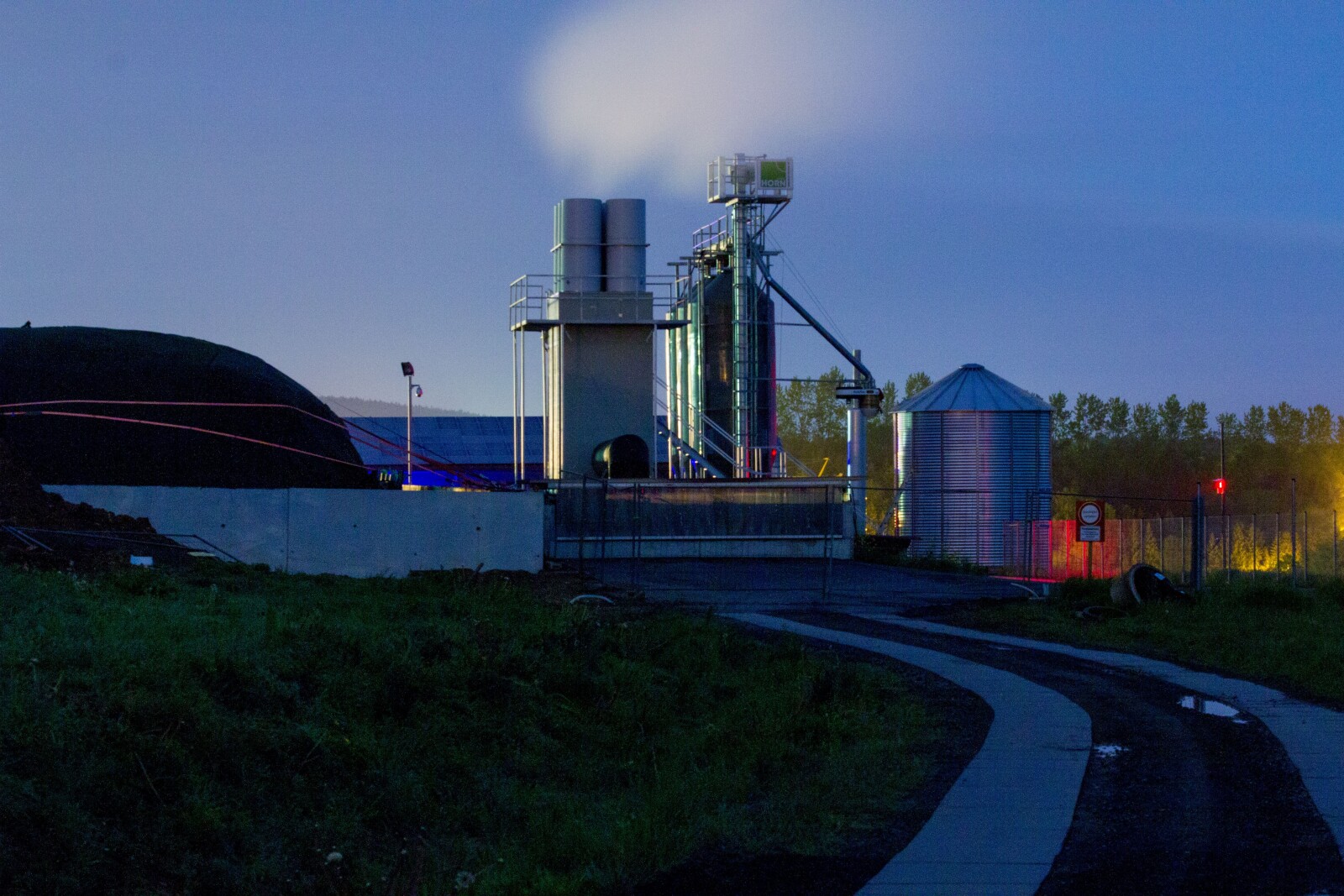The Pros and Cons of Joining a Chemical Exposure Class Action Lawsuit
Filing a Claim for a Mass Tort Environmental Lawsuit: What to Expect

Mass tort environmental lawsuits serve as a critical recourse for parties affected by extensive environmental harm. These legal actions address issues where negligent or intentional conduct results in widespread environmental damage, often impacting large communities.
This article provides a comprehensive guide to navigating the intricacies of filing a claim for such a lawsuit. It commences with an elucidation of the fundamentals of pollution litigation, proceeds to the identification and gathering of evidence, and the process of finding a suitable lawyer.
Further, it explores the nuances of case preparation and the intricacies of the legal process. The discussion extends to the role of the court, potential compensation, and possible remedies, while also highlighting challenges that may arise in the pursuit of justice.
Lastly, it explores the aftermath once a verdict is reached. This article serves as a valuable resource for those seeking justice in the face of environmental harm.
Key Takeaways
- Pollution litigation holds entities accountable for environmental damage caused by negligent or reckless business operations.
- Meticulous identification and collection of evidence is crucial in mass tort environmental lawsuits.
- Hiring a competent attorney who specializes in handling complex litigation is crucial for justice.
- The court plays a crucial role in mass tort environmental lawsuits, determining liability and potential compensation.
Understanding the Basics of Pollution Litigation
Pollution litigation, fundamentally, involves a comprehensive legal process where entities, typically large corporations, are held accountable for environmental damages they have caused, often through negligent or reckless business operations. These cases often revolve around the violation of pollution regulations, which are designed to protect the environment and public health. These regulations, whether instituted at a federal, state, or local level, set forth standards on emissions and discharges, waste disposal, and other potential sources of pollution.
The legislative impact on pollution litigation is significant. Legislation such as the Clean Air Act and the Clean Water Act in the United States, for example, provides the legal framework for prosecuting companies that violate pollution laws. Such legislation not only sets the standards for permissible levels of pollution but also establishes penalties for violations. The enforcement of these laws often involves litigation either by government agencies or private parties.
In the realm of mass tort environmental lawsuits, the stakes are high both for the plaintiffs and the defendants. For the plaintiffs, such lawsuits often represent their best opportunity to seek justice and compensation for the harm they have suffered. For the defendants, these lawsuits can result in substantial financial penalties and damage to their reputation. Furthermore, these cases often involve complex scientific evidence and require the expertise of professionals in various fields, from environmental science to epidemiology.
The complexity of pollution litigation, compounded by the wide-ranging impacts of polluting activities, underlines the importance of rigorous enforcement of pollution regulations. It is through such enforcement that entities can be held accountable for their actions, fostering a cleaner and healthier environment for all.
Identifying and Gathering Evidence
In the realm of legal proceedings, the initial crucial step involves the meticulous identification and collection of substantial evidence to substantiate the allegations made. This is particularly significant in mass tort environmental lawsuits where the burden of proof lies heavily on the plaintiff to establish that the defendant's actions have caused widespread environmental harm.
To this end, evidence classification becomes an indispensable tool in the litigation process.
Evidence classification aids in organizing and categorizing collected evidence in a systematic manner that helps to construct a strong and persuasive case. It typically involves the division of evidence into different types such as demonstrative, documentary, testimonial, and real evidence. In mass tort environmental lawsuits, the plaintiff often relies on a combination of these evidence types to prove the defendant's liability.
Demonstrative evidence, such as photographs or models, can visually depict the environmental damage caused. Documentary evidence, on the other hand, may include scientific reports or company records that reveal the defendant's negligence or violation of environmental regulations. Real evidence, like soil or water samples, can provide concrete proof of environmental contamination.
Furthermore, witness testimonies play a pivotal role in these lawsuits. They can offer firsthand accounts of the defendant's actions and their impact on the environment. Expert witnesses, such as environmental scientists or healthcare professionals, may also provide valuable insights into the causal link between the defendant's actions and the environmental damage.
The process of identifying and gathering evidence can be a daunting task. However, it is a fundamental prerequisite for filing a claim in a mass tort environmental lawsuit. With thorough preparation and meticulous investigation, plaintiffs can assemble a robust body of evidence to support their claims and seek justice for the environmental harm caused.
Finding a Suitable Lawyer
Securing the services of a competent attorney, well-versed in handling complex litigation, represents a pivotal step in achieving justice for widespread ecological harm. A qualified lawyer who specializes in mass tort environmental lawsuits is a vital asset, possessing the requisite experience and understanding of the intricacies involved in such cases.
Legal fees comparison is an essential aspect to consider when selecting an attorney. Mass tort lawsuits can be costly due to the significant resources required for research, expert witnesses, and extensive legal proceedings. Some firms work on a contingency basis, where they only receive payment if the case is successful, while others charge upfront fees or hourly rates. Comparing these financial implications is an integral part of the selection process, aimed at ensuring the client's financial capabilities align with the legal expenses.
The lawyer's qualifications are another crucial factor. An attorney specializing in environmental law must have a comprehensive understanding of the legislation, regulatory standards, and potential defenses that might be used by the opposing party. It's also beneficial if the lawyer has a track record of successful litigation in similar cases.
A suitable lawyer must also have robust negotiation skills and be able to represent the client effectively in court. This is particularly important in mass tort cases, where multiple plaintiffs are involved, and the potential for large-scale settlements or verdicts exists.
Choosing the right attorney can significantly impact the outcome of a mass tort environmental lawsuit. It is a decision that requires careful consideration of legal fees, qualifications, and the attorney's proven ability to effectively litigate such complex cases.
Preparing Your Case
Ensuring a solid foundation for your legal battle entails meticulous preparation, encompassing the comprehensive gathering of evidence, detailed witness testimonies, and an in-depth understanding of the related laws and regulations. This stage, often referred to as discovery, is crucial in a mass tort environmental lawsuit as it shapes the narrative of the case and influences the final judgment.
Understanding the legal terminology is essential in preparing a case. It not only aids in comprehending the complexities of the case but also assists in making informed decisions. Familiarity with terms such as ‘plaintiff', ‘defendant', ‘liability', ‘damages', among others, can help navigate the labyrinthine legal landscape.
A crucial aspect of case preparation is developing a case timeline, a chronological depiction of the events leading up to and after the environmental damage. The timeline should include all major incidents, medical diagnoses, and any other relevant events. A well-constructed case timeline can serve as a powerful tool in portraying the magnitude and impact of the incident, making it easier for the court to understand the sequence of events and their implications.
Furthermore, witness testimonies play a significant role in environmental mass tort lawsuits. Detailed testimonies can corroborate the evidence presented and provide a human perspective, often swaying the court in the plaintiff's favor. These testimonies can be from victims, bystanders, or experts who can shed light on the technical aspects of the case.
The preparation stage of a lawsuit is laborious and time-consuming, but it is the cornerstone on which a successful claim is built. Therefore, thorough preparation is indispensable in presenting a strong case.
Navigating the Legal Process
Navigating the intricate legal process demands a comprehensive understanding of the judiciary system, the stages involved, and the potential challenges that may arise. It is essential to comprehend the legal terminology and case timelines to ensure efficient and effective management of a mass tort environmental lawsuit.
The legal process for a mass tort case begins with the filing of a complaint, followed by the discovery phase where both parties gather evidence. Understanding legal terminology is crucial at this stage as it can influence the interpretation and presentation of evidence. The plaintiff must be aware of terms like plaintiff, defendant, tort, negligence, causation, and damages, among others, to comprehend the proceedings and make informed decisions.
Case timelines are another fundamental aspect of the legal process. There are specified periods in which certain legal actions must be taken. For instance, the statute of limitations sets a deadline for filing a lawsuit, which varies depending on the jurisdiction and the nature of the claim. There are also deadlines for filing motions, responses, and appeals, which can significantly impact the case's outcome.
The trial stage, if the case proceeds that far, is the culmination of the legal process. Here, the evidence collected during the discovery phase is presented to a jury or judge who will determine the case's outcome. This stage requires a concrete understanding of courtroom procedures, rules of evidence, and the art of persuasion to effectively present the case.
Throughout this process, potential challenges may surface, such as evidentiary issues, legal complexities, and unpredictable delays. Understanding these potential pitfalls can help in formulating strategies to overcome them and enhance the chances of a successful claim.
Engaging in a Class-Action Suit
Transitioning from navigating the legal process, it becomes essential to understand the complexities involved when engaging in a class-action suit. Class-action suits are typically utilized when numerous individuals have been harmed by a single entity, such as in environmental mass tort cases. This collective legal action can be a powerful tool in seeking justice and compensation for the damages suffered.
In the context of a mass tort environmental lawsuit, a crucial aspect that potential plaintiffs must be aware of is lawsuit financing. This refers to the financial resources required to pursue a lawsuit, which in a mass tort case, can be quite substantial. Given the extensive nature of these lawsuits, the costs associated with expert testimonies, document gathering, and legal representation can be significantly high. Some law firms offer contingent fee arrangements, which means that the attorney fees are only paid if the case is successful. However, lawsuit financing remains a critical consideration for potential litigants.
Once a class-action lawsuit concludes and if the court rules in favor of the plaintiffs, the next step is the settlement distribution. This involves the allocation of the compensation awarded amongst the plaintiffs. Each member of the class-action lawsuit will receive a portion of the settlement, the amount of which is determined by several factors such as the degree of harm suffered, the costs incurred, and the strength of each individual claim.
The process of engaging in a class-action suit can be complex and lengthy, especially in mass tort environmental cases. However, the collective power of a group can prove to be an effective method in seeking justice and compensation for damages. It is essential for potential plaintiffs to be aware of the intricacies involved, including lawsuit financing and settlement distribution, to ensure they are adequately prepared for the legal battle ahead.
The Role of the Court
Delving into the intricate workings of a class-action suit, an often-overlooked yet critical component is the role of the court, a pivotal institution that not only adjudicates on the validity of the claims but also oversees the entire legal process. In a mass tort environmental lawsuit, the court's role becomes more complex and demanding, given the nature of claims involving multiple plaintiffs and defendants. The court is the final arbiter, interpreting the laws related to environmental damage and determining the applicability of these laws to the facts presented.
The concept of court jurisdiction is central to the understanding of the legal process in environmental mass tort lawsuits. For instance, the court must determine whether it has the power to hear the case, which depends on the geographical location of the incident, the residence of the plaintiffs and defendants, and the nature of the environmental harm. This aspect of court jurisdiction ensures the fair and proper administration of justice.
Moreover, judicial interpretation is a significant function of the court. Laws related to environmental issues can be intricate and complex. Therefore, the court must interpret these laws accurately to ensure the right application to the specific circumstances of the case. The court's interpretation can influence the outcome of the case, affecting the compensation awarded to the plaintiffs and the penalties imposed on the defendants.
The court's role in a mass tort environmental lawsuit is instrumental and multifaceted. This institution, through its jurisdiction and interpretation, provides a platform where justice can be sought and delivered, ensuring that the complexities of such lawsuits are properly managed and resolved.
Possible Compensation and Remedies
In the aftermath of a legal victory in cases involving environmental harm, the focus often shifts to the forms of compensation and remedies available to the aggrieved parties. These forms of redress can be broadly divided into monetary and non-monetary forms.
Monetary compensation may include the reimbursement of medical expenses, loss of earnings, and property damage.
Non-monetary remedies, on the other hand, may involve the court ordering the responsible party to clean up the environment, restore the damaged ecosystem, or implement measures to prevent future harm.
Insurance considerations are particularly crucial in the context of mass tort environmental lawsuits. The claimants may find it beneficial to involve their insurance providers early in the process. The insurance provider may cover some or all of the costs related to the lawsuit, including legal fees and potential settlement amounts. However, the claimants must carefully review their insurance policies to understand the extent of coverage, as some policies may not cover environmental damages or may have specific exclusions for such damages.
Furthermore, the claimants must also understand the tax implications of their compensation. Generally, compensation received for physical injuries or sickness is not subject to tax. However, other forms of compensation, such as punitive damages and interest on the compensation, may be taxable. It is recommended that claimants seek advice from tax professionals to navigate the complex tax rules related to lawsuit settlements.
It must be noted that while monetary compensation can provide immediate relief to the aggrieved parties, non-monetary remedies can be instrumental in ensuring long-term environmental sustainability and preventing future harm. Thus, the ultimate goal of a mass tort environmental lawsuit should not only be to secure immediate compensation but also to achieve long-lasting environmental justice.
Potential Challenges in Pursuit of Justice
Despite the potential for redress, plaintiffs pursuing justice in cases of environmental harm often encounter a myriad of challenges that can impede their quest for compensation and restoration. One such obstacle can be justice delays, which are commonly experienced in mass tort environmental lawsuits. These delays may be due to the complex nature of these cases, which often involve numerous victims, multiple defendants, and intricate environmental and medical evidence. Consequently, it may take years, or even decades, before a resolution is reached.
Another significant challenge is victim representation. It is vital for all affected individuals to be adequately represented in a mass tort lawsuit. However, given the massive number of victims that can be involved in environmental disasters, ensuring fair and comprehensive representation can be an arduous task. This is particularly true when victims are spread across large geographical areas or belong to marginalized communities with limited access to legal resources.
Moreover, the power imbalance between individual victims and corporate defendants can make pursuing justice an uphill battle. Corporate defendants typically possess significant financial resources and legal teams that can mount formidable defenses. This may result in drawn-out legal battles that can exhaust the resources of victims and their legal representatives.
In the pursuit of justice in mass tort environmental lawsuits, these challenges underscore the need for robust legal frameworks, capable legal representation, and mechanisms to expedite these cases. Overcoming these obstacles is crucial to ensuring that victims of environmental harm achieve the compensation and restoration they deserve.
What Happens After a Verdict is Reached
Once a verdict is reached, it marks the beginning of another phase in the journey towards justice, often involving the execution of the judgment and possible appeals. The implications of the verdict in a mass tort environmental lawsuit can be far-reaching and complex, affecting both the plaintiffs and the defendant corporations.
Verdict implications may involve financial reparations for the plaintiffs, changes in corporate practices to prevent future harm, and in some cases, punitive damages to deter similar behavior in the future. The verdict can also set a legal precedent, influencing future cases of a similar nature.
Post verdict procedures involve the enforcement of the judgment, ensuring that the defendant complies with the court's orders. This may involve the court overseeing the distribution of damages to the plaintiffs or the implementation of changes in the defendant corporation's practices.
The post verdict phase can also involve an appeals process. The losing party may choose to challenge the verdict by appealing the decision to a higher court. This can lead to further legal proceedings, extending the duration of the lawsuit. It should be noted that an appeal is not a re-trial but rather a review of the legal procedures followed in the original trial.
Understanding the complexities that ensue after a verdict is reached in a mass tort environmental lawsuit is critical. It is a period marked by the execution of the judgment, the possibility of appeals, and the unfolding implications of the verdict. The journey towards justice does not necessarily end with the verdict but continues through the post verdict procedures, ensuring that the court's decision is implemented and upheld.
Frequently Asked Questions
How long does a mass tort environmental lawsuit typically take to resolve?
The duration of a mass tort environmental lawsuit is variable, often taking several years to reach resolution.
This is due to the extensive lawsuit preparation required, which encompasses gathering evidence, filing legal documents, and potentially engaging in discovery.
After preparation, settlement negotiations ensue, which can be a lengthy process.
While some cases may settle relatively quickly, others may require extensive litigation.
Thus, the timeline is unpredictable and contingent on numerous factors.
Can I file a claim if I live outside of the affected area but still suffered damages?
Claims from individuals residing outside the impacted area yet experiencing damages are often subject to jurisdiction challenges. The claimant bears the burden of proving damages and establishing a direct causal link between the environmental incident and their losses.
It requires meticulous documentation and expert testimony. While the complexity of the case may present hurdles, it doesn't negate the possibility of filing a claim.
Legal advice is highly recommended to navigate these complexities.
What are the tax implications of any compensation or remedies received from such a lawsuit?
Tax implications for compensation or remedies received from a lawsuit can be complex. Generally, the Compensation Classification determines the taxability. Typically, compensatory damages for physical injuries are tax-exempt, while punitive damages are taxable. However, their tax deduction eligibility is contingent on the nature of the damages and how they are classified.
Legal advice should be sought to ensure proper reporting and to minimize potential tax liabilities.
How does filing a claim for a mass tort environmental lawsuit affect my insurance coverage?
Filing a claim for a mass tort environmental lawsuit may potentially impact insurance coverage. Specifically, insurance premium increases could be a consequence, as insurers may perceive such claimants as higher risk.
Furthermore, there exist policy cancellation risks, as insurance providers may opt to not renew policies following such claims. However, these impacts are contingent on specific policy terms and the insurance company's assessment of risk associated with the environmental claim.
Is it possible to file a claim if the responsible party is a government entity or corporation?
Yes, claims can certainly be filed against both government entities and corporations in mass tort environmental lawsuits. The principle of Government Liability ensures that these public entities can be held responsible for damages caused.
Similarly, laws enforcing Corporate Accountability make it possible to pursue corporations for their role in environmental harms. However, the legal procedures involved can be complex and necessitate a thorough understanding of the pertinent laws and regulations.
Conclusion
In conclusion, navigating mass tort environmental lawsuits proves complex, requiring extensive knowledge and preparation. Gathering substantial evidence and securing competent legal representation remain paramount.
The court plays an integral role in determining possible compensation, yet potential challenges may hinder justice. However, understanding the process significantly aids in the pursuit of justice following a verdict.
Therefore, it is imperative to understand the intricacies involved in pollution litigation for effective legal recourse.

This post has been generated by AI and was not reviewed by editors. This is Not legal advice. Please consult with an attorney.




